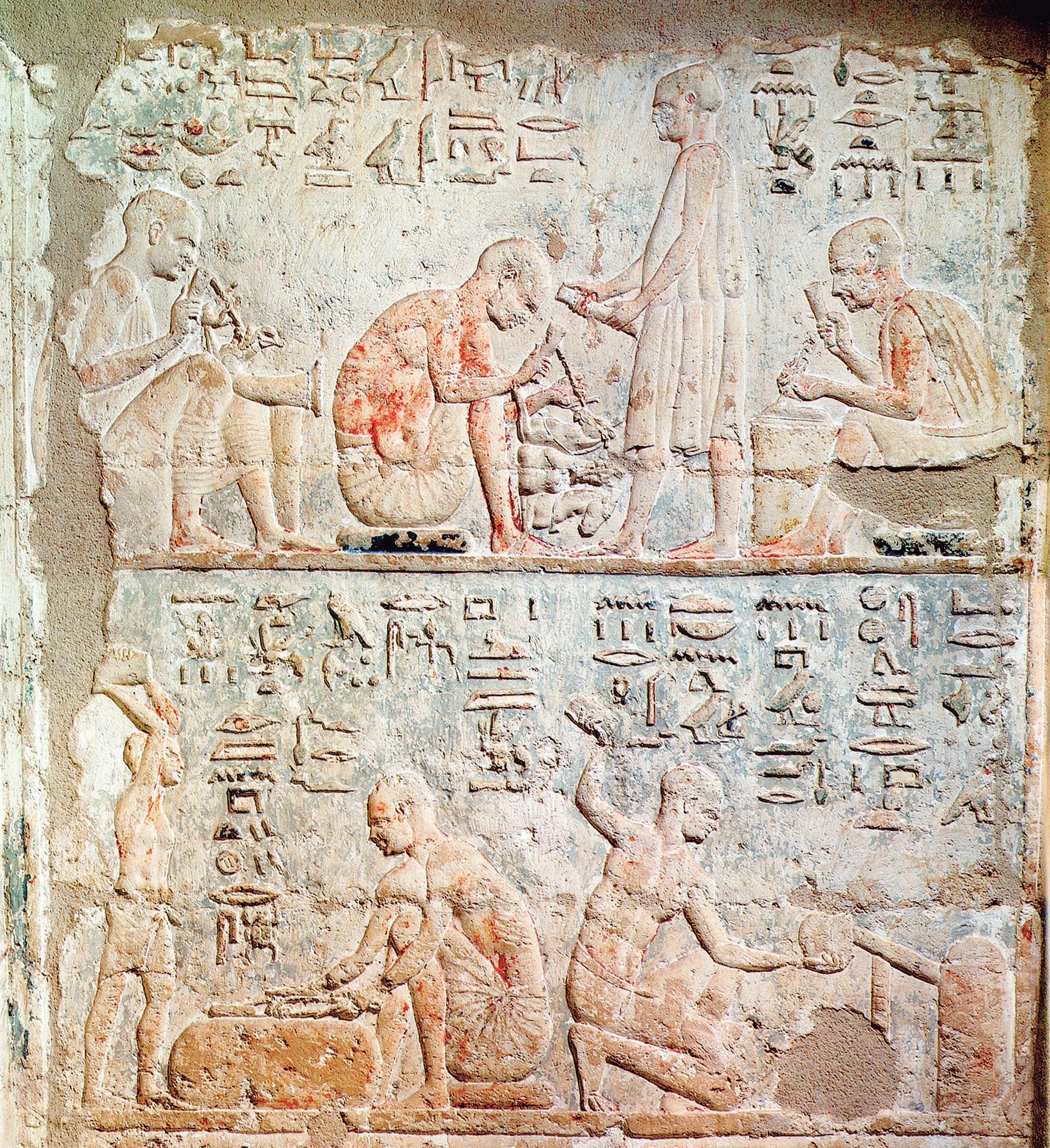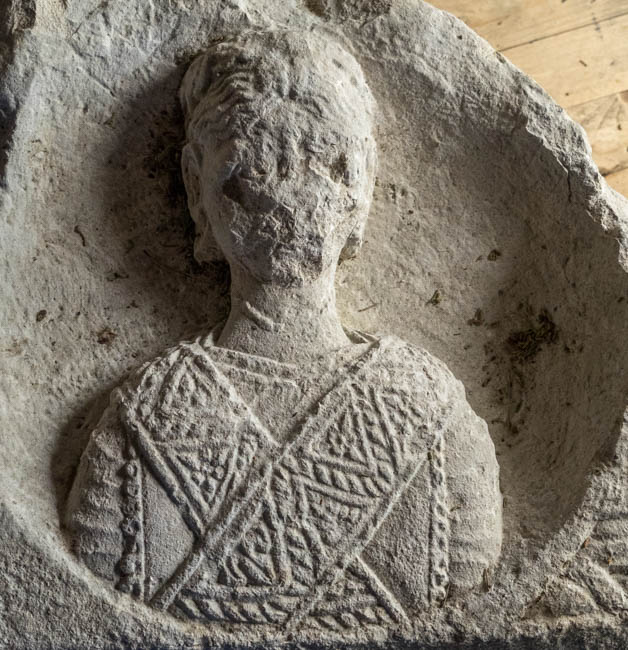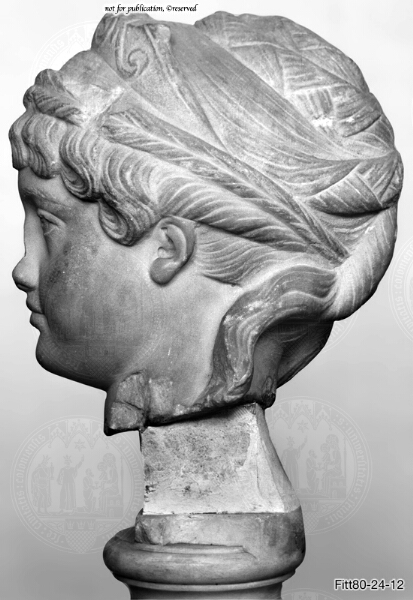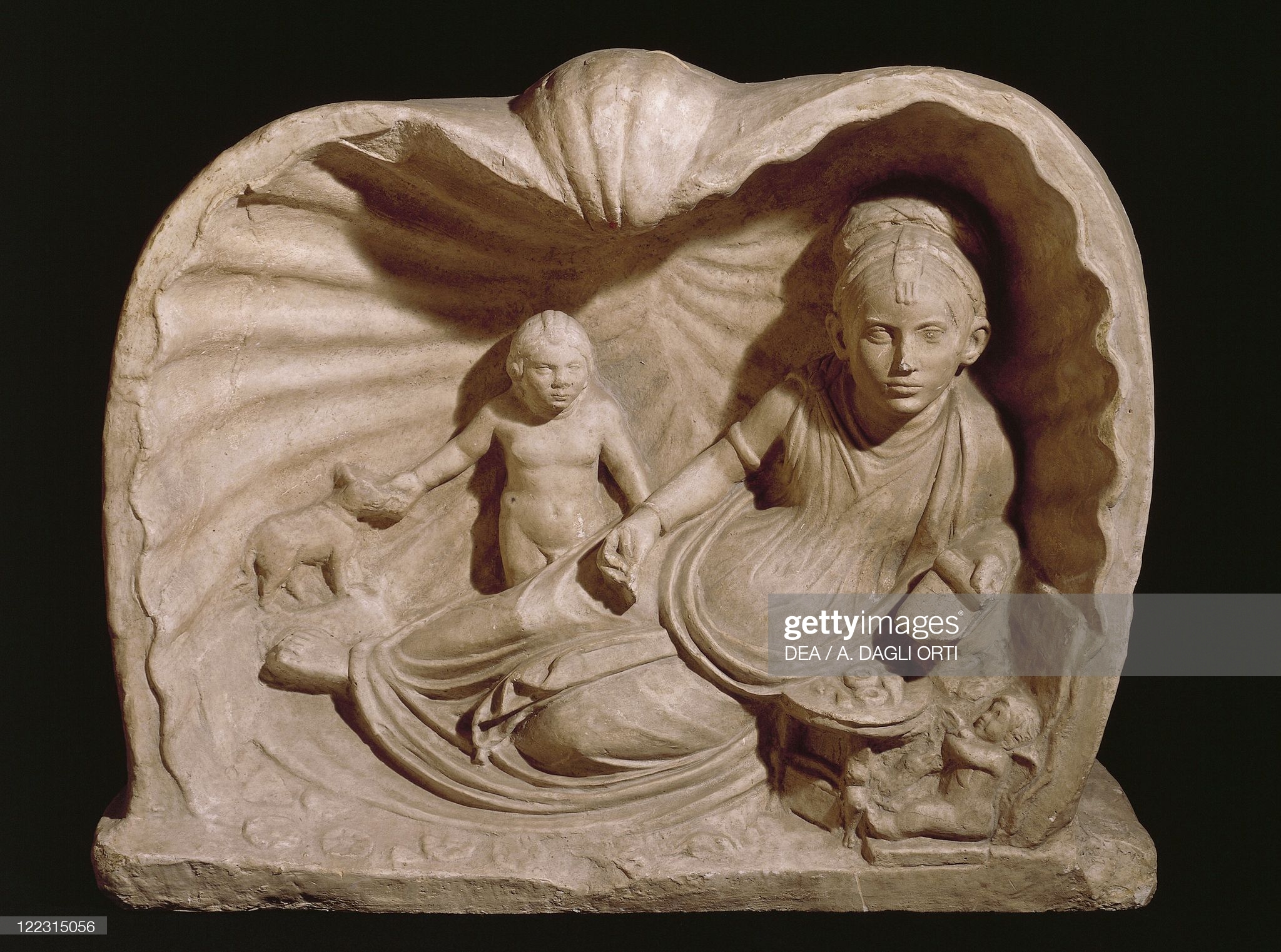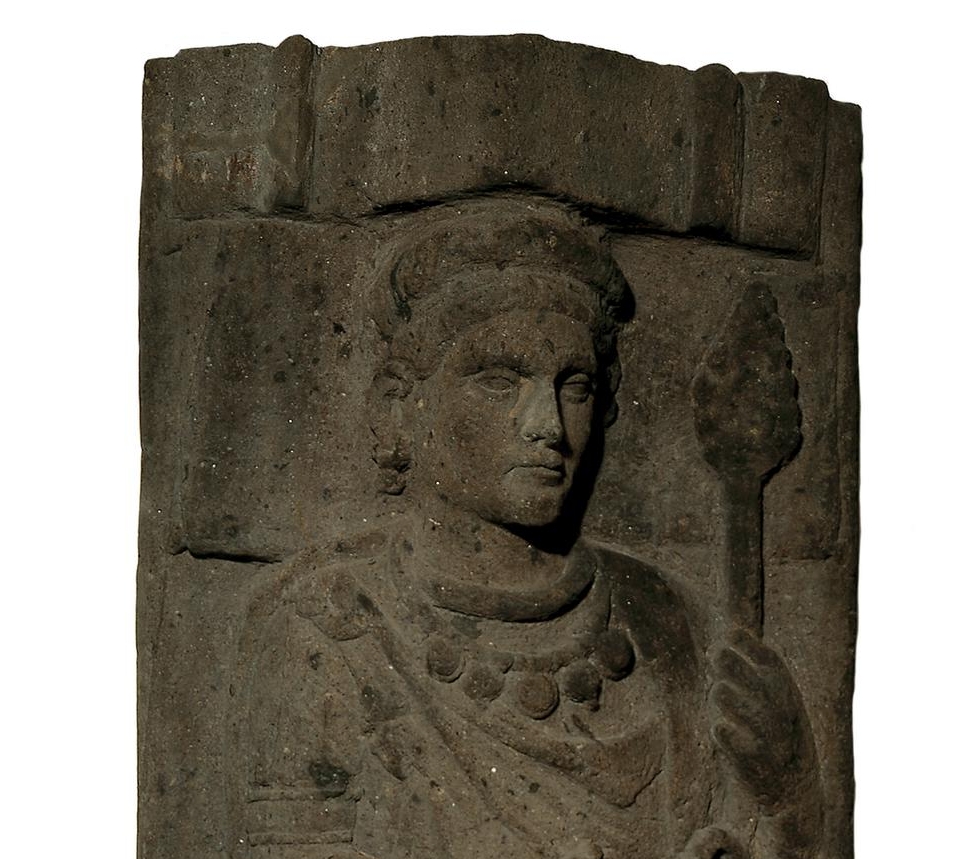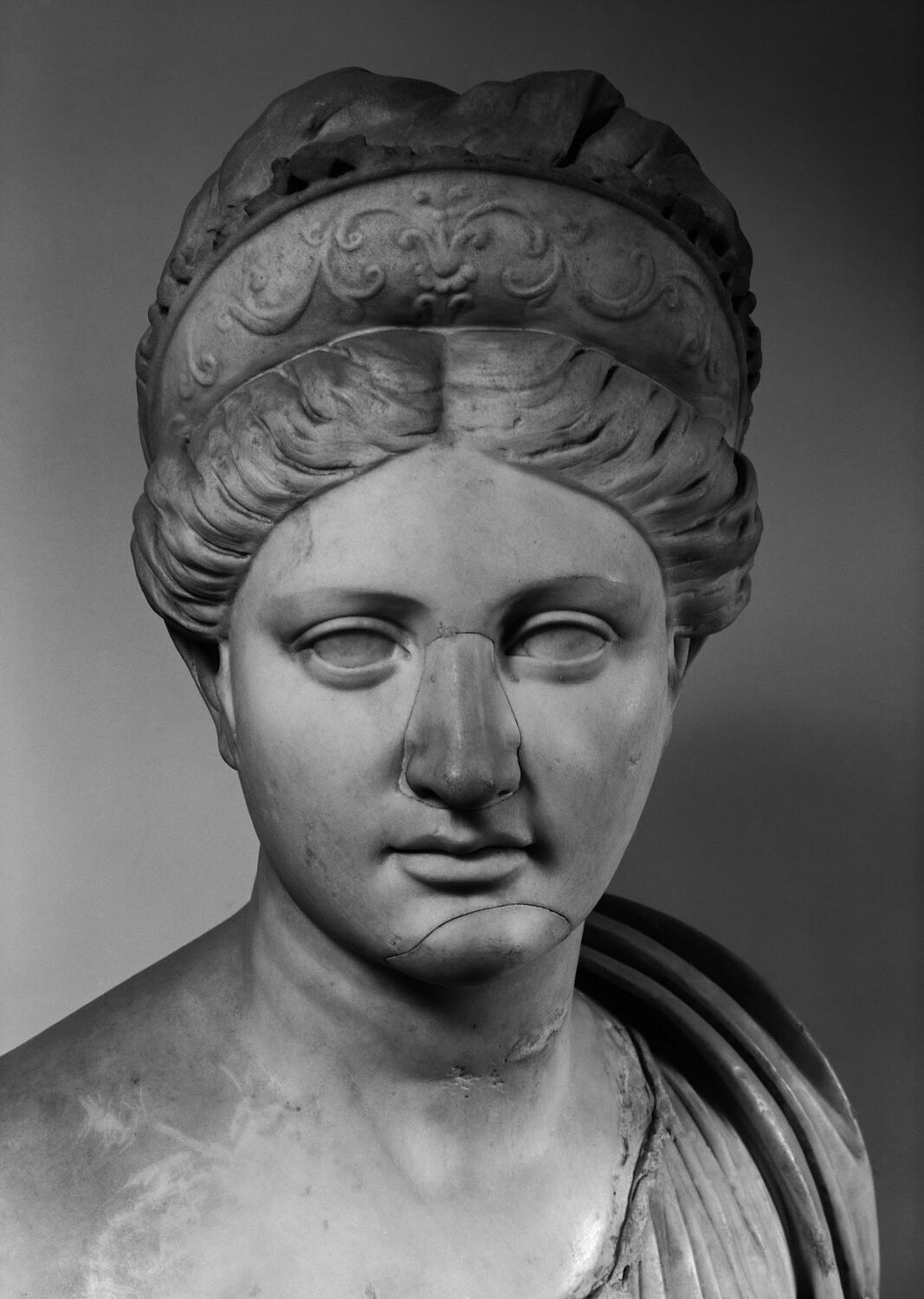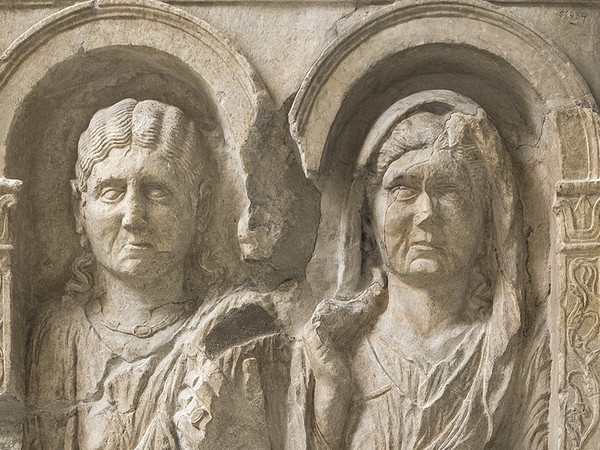
Roman limestone grave stele of Optata Fadia and her sister Statia Fadia, early 1st century. In the National Archaeological Museum of Aquileia | Photo © Gianluca Baronchelli
In the Arachne database 596: Grabstele der Otata Fadia

Description from the article “Sorelle, spose, madri. Il mondo al femminile nei monumenti funerari di Aquileia” by Annalisa Giovannini and Paola Ventura https://www.archeocartafvg.it/wp-content/uploads/Sorelle_spose_madri_Il_mondo_al_femminile-nei-monumenti-funerari-di-Aquileia.pdf
“The stele of Optata Fadia and Statia (Fadia), found in 1931 between San Canzian d’Isonzo and the locality of Marcorina (…) Dated to the first decades of the 1st century AD, it shows the two sisters, in mature age, with fashionable hairstyles and jewels: the hair is combed according to the styles launched by Livia in old age and by the two Agrippines, the earrings seem of the projecting median line, in the above-mentioned stalagmium type (fig. 12). The necklace worn by Optata, formed by rigid and grooved links, interspersed with alternating oval and rectangular bezels, with a larger central bezel (fig. 13), shows modules that will have full development in subsequent moments76 and which, in the period considered, are confirmed, by way of example, in a bracelet preserved in the British Museum, and echoes in the ribbon necklace from Pompeii, contrada Bottaro. The necklace forms a set with the bracelet worn just above the right elbow.
Both, then, wear an annulus lapillus on the left ring finger (figs. 14 and 15). The soft stone has allowed even in such cases a very accurate rendering in detail. The Optata ring, which can be inserted in the Guiraud Ib type and present in the repertoires of the Vesuvian cities, datable from the Tiberian to the Flavian age, has an oval bezel with flat and beaten strip edges, while the gem seems to even show a decorative motif, in a propositive way perhaps identifiable in a pot-bellied vase. The specimen worn by Statia would belong to the Guiraud 2d type, with a massive rod, in use since the 1st century AD: it should be noted that it was realistically represented a bit turned on the finger, with the bezel facing the little finger.”
see also https://www.archeocartafvg.it/wp-content/uploads/Aquileia-attestazioni-funerarie-di-eta-augustea.pdf





